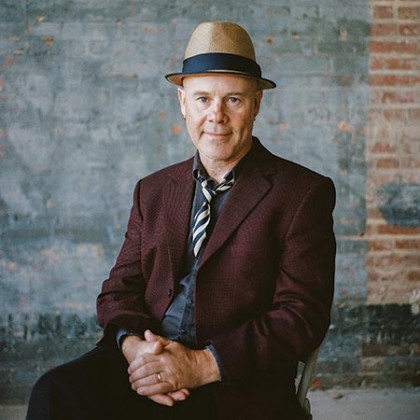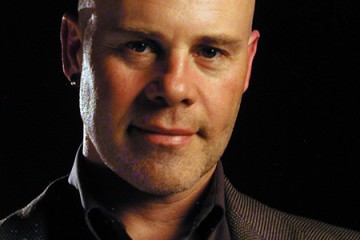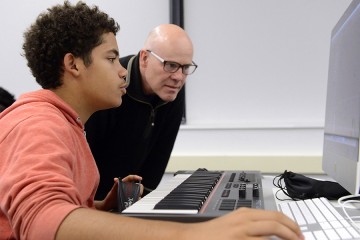Two decades before the Oculus Rift became the first sophisticated and relatively affordable virtual reality headset to hit the market, Thomas Dolby created "The Virtual String Quartet." As part of the Solomon R. Guggenheim Museum's Virtual Reality: An Emerging Medium series, Dolby had museumgoers don VR headsets upon entering a gallery. In the headset's virtual space, computer-generated musicians played Mozart's String Quartet no. 18 in A Major as you stood among them. Move about and what you heard changed. Approach the violinist, for example, and the violin became more prominent.

Image caption: Thomas Dolby
Image credit: Photograph by Dave Cooper
When the exhibit opened in October 1993, people lined up around the block to check it out. "Some of the ideas that I first investigated several years ago were very hard to actualize given the processing power and the abilities we had back then," Dolby says of the piece, which had compelling audio but less impressive graphics. "When I first started getting interested in interactive music in the '90s, it was in response to early work that I'd seen in video games, virtual reality, and location-based entertainment, but a lot of those technologies are only really starting to become mainstream now."
As he writes in his recent memoir, The Speed of Sound: Breaking the Barriers Between Music and Technology (Flatiron Books, 2016), the Johns Hopkins professor of the arts in the Film and Media Studies Program has spent his entire career anticipating what might happen next in music's creation and use. In the late 1970s, Dolby was a young musician whose main songwriting instrument was the synthesizer while a majority of his contemporaries were exploring punk and post-punk with rock's conventional guitar, bass, and drums. Today, entire generations of artists, from British electronic duo Autechre to experimental pop producer/singer Grimes, start making music with sequencers, drum machines, and laptops before ever touching a traditional instrument. Dolby spent the 1980s inside pop music's welcoming fold—thanks to his 1982 album The Golden Age of Wireless and its "She Blinded Me With Science" video and top-10 hit—as long as he kept making dance hits that labels could easily sell. He wasn't so inclined. Come the early 1990s, something else was grabbing his attention: the internet.
He left music to explore a career in Silicon Valley. At the time, some of his musician friends wondered when he was going to quit dabbling in gizmos and go back to making records. But today, music fans turn to iTunes, Bandcamp, Spotify, and YouTube to hear what they want.
Dolby started writing soundtracks for video games and realized there's huge potential in thinking about sound in the nonlinear, user-defined experiences of video games and virtual reality. "People tend to get drawn to the visual first, and so they'll talk about processing power or numbers of pixels, but in reality the sound and music is a crucial component of the experience," Dolby says, adding that this idea raises some interesting questions about the role of music in cinema. "In a movie about a space station breaking up, we still have an orchestral underscore playing in the background," he says. "And we sort of buy into that and we're used to that as a way to tell us how to feel about what we're seeing. Is that still acceptable?"
More interesting is how he imagines electronic music tools evolving in the coming years. Many digital audio workstations use a desktop interface that resembles an analog recording studio—"which presupposes that you are a sound engineer as well as a musician," Dolby says. "I think we're going to start to see some very interesting new types of interfaces for creation and performance in music that aren't all about knobs and faders. I think software will maybe become more intuitive, more gestural—and that would include some of the same hardware that will be used for virtual reality in terms of headphones, displays, and gloves, and things like that."
And the way technology expands sound's creation and possibilities is something Dolby thinks music education needs to consider as well. "This is an area that one day the people in the conservatory will be exploring," he says. "We have to find ways that students can express themselves in new kinds of mediums."
Posted in Arts+Culture
Tagged music, film and media studies, technology, virtual reality, sound production









